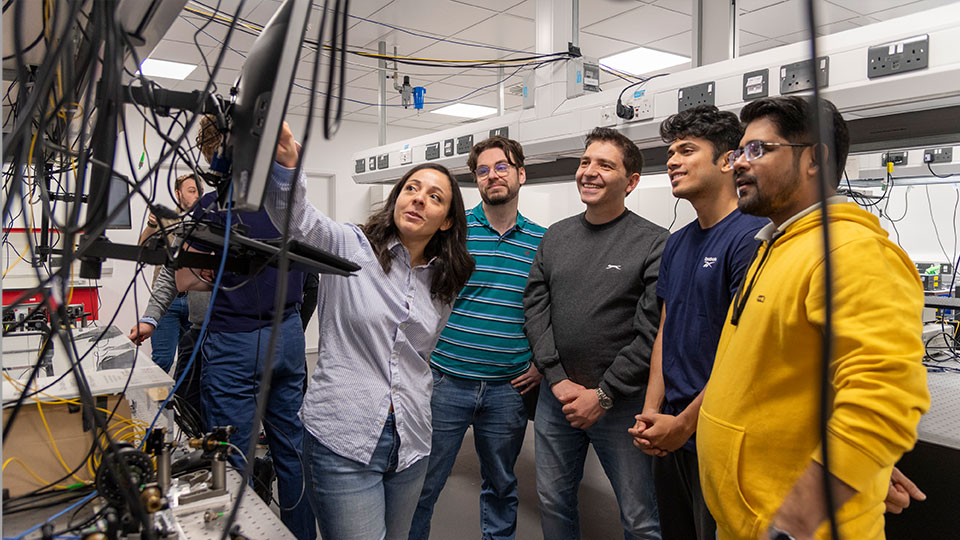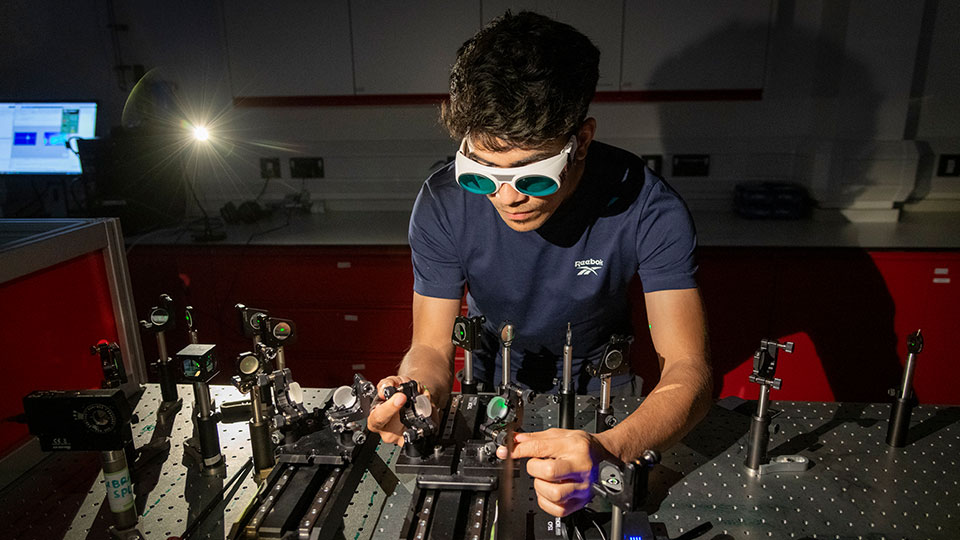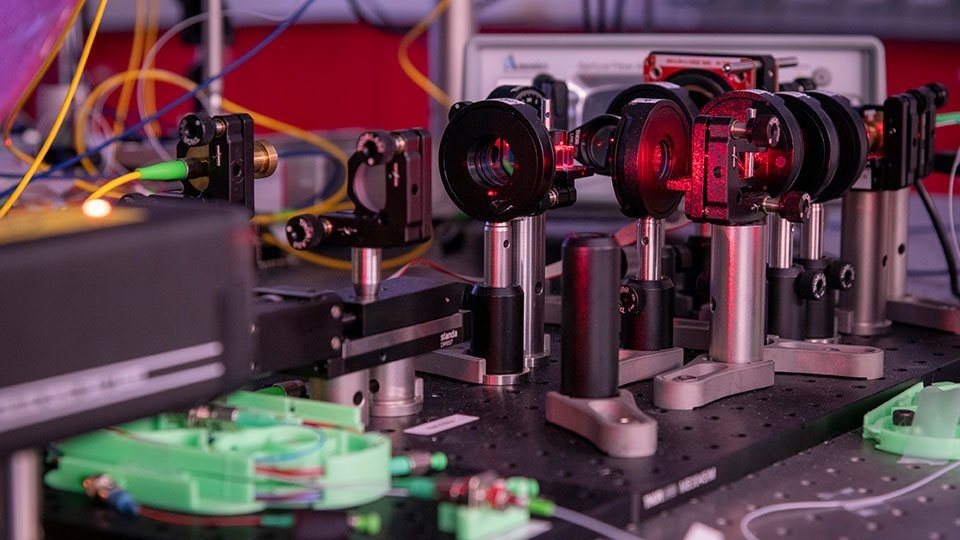Our Research

The Emergent Photonics Research Centre (EPicX) opened in June 2024 at Loughborough University and encompasses 600 sqm of state-of-the-art, multi-million pound infrastructure and a dedicated core of researchers. The Centre is dedicated to advancing ultra-fast nonlinear photonics through harnessing the phenomenon of Photonics Complexity—a domain describing collective behaviours—to explore quantum and information technologies, AI, sensing, and imaging. We target socioeconomic impact, leveraging our core expertise in nonlinear optics.
EPicX conducts research in the following areas:
Ultrafast photonics and THz

Ultrashort optical pulses (with durations of several picoseconds or shorter) have many fundamental research areas, from communication to the fundamental investigation of natural laws. They are also key actors in many photonic nonlinear technologies for all-optical manipulation. Ongoing investigations comprise of the development of novel kinds of optical sources for metrology, spectroscopy and optical clocks from quantum devices. These include the investigation of complex light behaviour in micro-resonating structures, and novel forms of ultrafast diagnostics and field manipulation.
Microcombs

One of our key research areas, led by Professor Alessia Pasquazi, focuses on Position Navigation and Timing (PNT), a priority for the UK Government. This work centers on a technology called ‘microcombs’. Accurate timekeeping is a vital national resource, and emerging fields like quantum technologies require unprecedented levels of precision—down to errors of less than a second over a billion years.
Optical combs, specialised lasers, are critical to achieving this level of accuracy. In a digital watch, for example, a reference oscillator ticks 32,000 times per second, with an electronic counter dividing this frequency to measure seconds. In a caesium clock—the current standard for precision—an oscillator with a frequency of 9 billion ticks per second is divided by 9 billion to achieve the same result.
To push timing accuracy to the next level, we need to harness the frequency of light emitted by certain atoms. However, dividing frequencies in the range of hundreds of billions of oscillations per second (100 THz) cannot be achieved with traditional electronics. This is where optical combs come in, bridging the gap between extremely high light frequencies and the frequencies usable in electronic devices.
One of the biggest challenges is miniaturising combs, as they are typically large and bulky. Our microcombs research aims to overcome this by integrating them into small photonic chips, providing the same capabilities in a compact, integrated form.